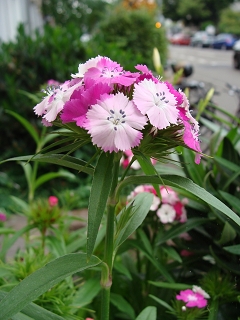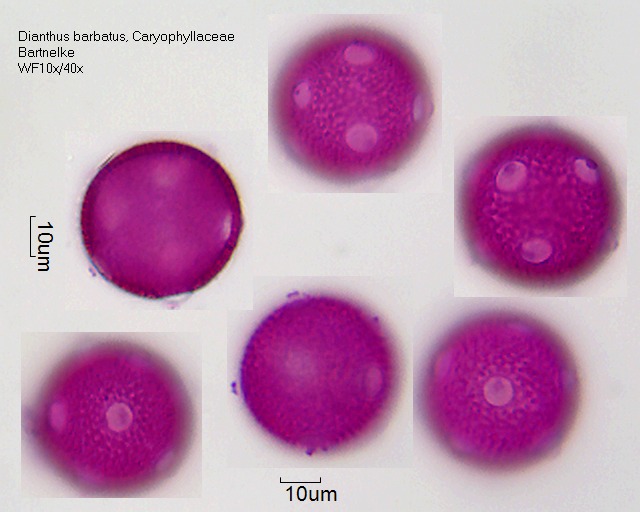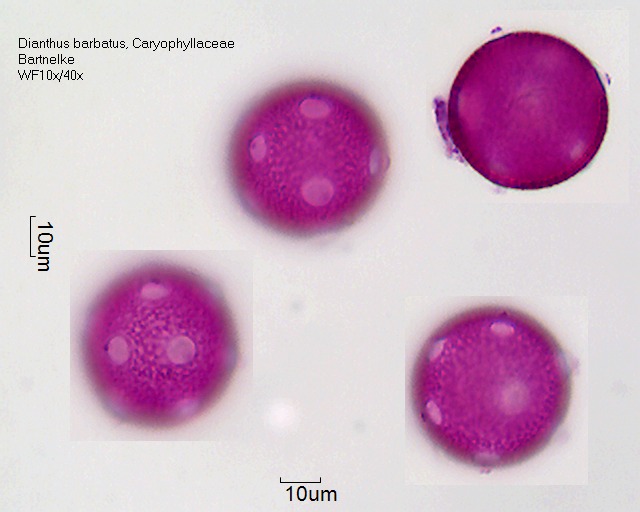Dianthus barbatus: Unterschied zwischen den Versionen
Zur Navigation springen
Zur Suche springen
KKeine Bearbeitungszusammenfassung |
K (Textersetzung - „Pollen:“ durch „“) |
||
| Zeile 9: | Zeile 9: | ||
| pkd ={{PK33}}, 33.8 Caryophyllaceae p.p., 33.8.11 Dianthus | | pkd ={{PK33}}, 33.8 Caryophyllaceae p.p., 33.8.11 Dianthus | ||
| pk =Periporat | | pk =Periporat | ||
| bm = | | bm = Rund, sphäroid, microechinat, Aperturmembrane sind ornamentiert: operculat. Porendurchmesser ca. 7.4 μm. Porenabstand ca. 20.4 μm (17.3-24.7) | ||
| nr =3-007 | | nr =3-007 | ||
}} | }} | ||
[[File:Dianthus barbatus (1).jpg]][[File:Dianthus barbatus (2).jpg]] | [[File:Dianthus barbatus (1).jpg]][[File:Dianthus barbatus (2).jpg]] | ||
Version vom 10. Mai 2018, 20:46 Uhr

|
Familie: | Caryophyllaceae (Nelkengewächse) |
| Deutscher Name: | Bartnelke | |
| Pollengrösse: | 39 (39.2-39.8) μm (Medium) | |
| Pollenklasse: | 33 Periporatae, 33.8 Caryophyllaceae p.p., 33.8.11 Dianthus | |
| Pollen: | Rund, sphäroid, microechinat, Aperturmembrane sind ornamentiert: operculat. Porendurchmesser ca. 7.4 μm. Porenabstand ca. 20.4 μm (17.3-24.7) | |
| Präparatenummer: | 3-007 | |
| Diskussion: | Kommentare und Hinweise zu Dianthus barbatus ans Pollen-Wiki senden |

